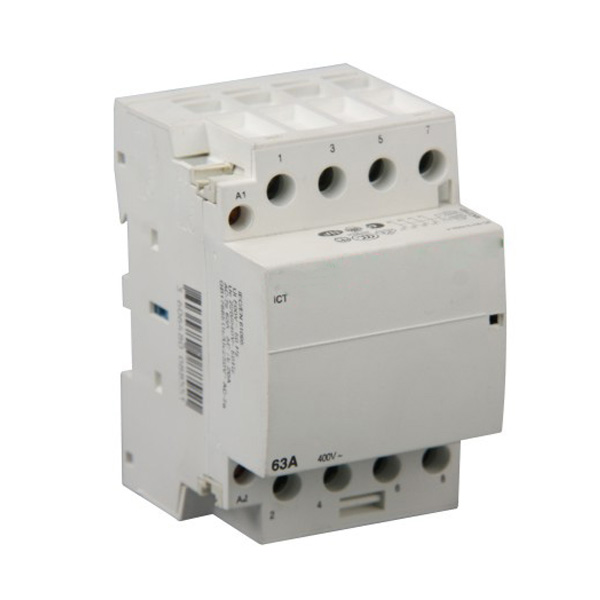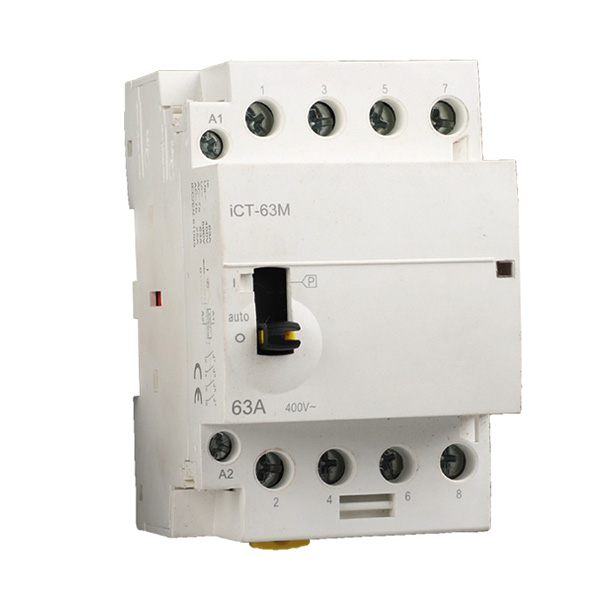Low-voltage AC contactors are mainly used to switch on and off the power supply of electrical equipment, which can control the power equipment from a long distance, and avoid personal injury when switching on and off the power supply of the equipment. The selection of AC contactor is very important for the normal operation of power equipment and power lines.
1. Structure and parameters of AC contactor
In general use, the AC contactor device is required to have a compact structure, easy to use, a good magnetic blowing device for the moving and static contacts, good arc extinguishing effect, zero flashover, and small temperature rise. According to the arc extinguishing method, it is divided into air type and vacuum type, and according to the operation method, it is divided into electromagnetic type, pneumatic type and electromagnetic pneumatic type.
The rated voltage parameters of the contactor are divided into high voltage and low voltage, and the low voltage is generally 380V, 500V, 660V, 1140V, etc.
Electric current is divided into alternating current and direct current according to the type. Current parameters include rated operating current, agreed heating current, making current and breaking current, agreed heating current of auxiliary contacts and short-time withstand current of contactor, etc. The general contactor model parameters give the agreed heating current, and there are several rated operating currents corresponding to the agreed heating current. For example, for CJ20-63, the rated operating current of the main contact is divided into 63A and 40A. 63 in the model parameter refers to the agreed heating current, which is related to the insulation structure of the contactor’s shell, and the rated operating current is related to the selected load current, related to the voltage level.
AC contactor coils are divided into 36, 127, 220, 380V and so on according to the voltage. The number of poles of the contactor is divided into 2, 3, 4, 5 poles and so on. There are several pairs of auxiliary contacts according to normally open and normally closed, and are selected according to control needs.
Other parameters include connection, breaking times, mechanical life, electrical life, maximum allowable operating frequency, maximum allowable wiring diameter, external dimensions and installation dimensions, etc.Classification of contactors
Common Contactor Types
Use category code for typical load example typical equipment
AC-1 non-inductive or micro-inductive load, resistive load resistance furnace, heater, etc.
Starting and breaking of AC-2 wound induction motor Cranes, compressors, hoists, etc.
AC-3 cage induction motor starting, breaking fans, pumps, etc.
AC-4 cage induction motor starting, reverse braking or close-off motor fan, pump, machine tool, etc.
AC-5a discharge lamp on-off high-pressure gas discharge lamps such as mercury lamps, halogen lamps, etc.
On-off incandescent lamps for AC-5b incandescent lamps
AC-6a transformer on-off welding machine
On-off capacitor of AC-6b capacitor
AC-7a Household appliances and similar low-inductance load microwave ovens, hand dryers, etc.
AC-7b home motor load refrigerator, washing machine and other power on and off
AC-8a motor compressor with hermetic refrigeration compressor with manual reset overload release
AC-8b motor compressor with hermetic refrigeration compressor with manual reset overload release


Post time: Jul-10-2023